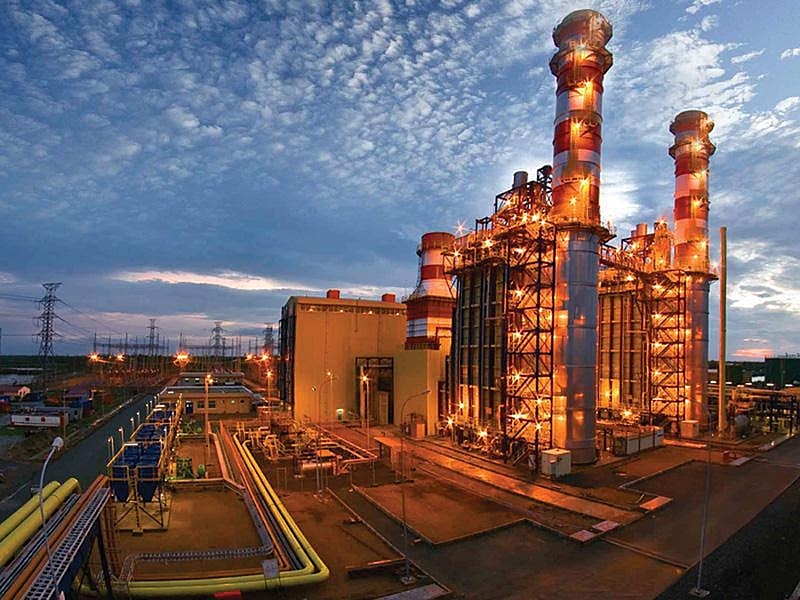Investors show growing appetite for LNG power projects
 |
| Investors are showing growing preference to running LNG-fired power projects |
Earlier this month, the prime minister allowed Long An I and Long An II thermal power plants that were already in the revised Power Development Plan VII (PDP VII) to shift from coal to liquefied natural gas (LNG), with a total combined capacity after conversion reaching 3,000MW.
In December 2019, the premier approved adding Bac Lieu LNG Thermal Power Centre with a scale of 3,200MW to the national power development plan for 2011-2030.
The Mekong Delta province of Bac Lieu then swiftly conferred the project’s investment certificate to Singaporean developer Delta Offshore Energy Pte., Ltd. for implementation.
With an estimated investment value of VND93.6 trillion ($4.1 billion), it is the largest-ever foreign direct investment project in the delta region until present.
A month earlier, the Ministry of Industry and Trade (MoIT) and US-based AES Group signed an MoU on conducting Son My 2 LNG power plant, with a scale of 2,200MW.
The plant will be located in the southern province of Binh Thuan and comes with an estimated investment of $1.7 billion and a contract for 20 years.
“LNG is a clean and reliable energy source at a more reasonable pricing point, so it will play a key role in resolving the ever-growing energy demand in Vietnam. Signing the MoU at this time is an important milestone for developing Son My 2 power plant, a project that we believe will help the energy industry’s transition in Vietnam,” said Mark Green, president of AES for Asia-Europe.
These projects are only a few of the more than 10 sizeable LNG power projects currently in the development pipeline, with production capacity reaching from about 1,000MW to 6,000MW.
| The MoIT’s recent report to the government has acknowledged that investors and localities are showing a huge appetite for thermal power projects using imported LNG. |
The MoIT’s recent report to the government has acknowledged that investors and localities are showing a huge appetite for thermal power projects using imported LNG.
Particularly, besides LNG-fired power complexes whose planning schemes were approved with a combined capacity of 9,200MW, nine other LNG power complexes with a total capacity of approximately 34,000MW are in different phases of consideration.
In addition, there have been two proposals on shifting from coal and oil to LNG, with a combined capacity after conversion reaching 5,700MW.
Last month, Deputy Prime Minister Trinh Dinh Dung met with a group of US and South Korean investors showing a keen interest in developing LNG power projects in Vietnam.
The investors reaffirmed their wish to invest in LNG power projects to develop clean energy sources and ensure sufficient power supply for both production and consumption. They also pledged to make long-term and effective investments in LNG power project development in the country.
According to Deputy PM Trinh Dinh Dung, the demand for electricity in Vietnam is growing at an average 10 per cent a year.
The country is diversifying its sources of power in the direction of reducing coal power and raising the share of gas and renewable energy, Dung said, adding that gas-fired power is slated to account for 12 per cent of total electricity generation, equivalent to 17GW, by 2030.
Vietnam, with a GDP growth averaging 6.5 per cent in the last few years, has a long-standing policy orientation that emphasises the crucial role of natural gas in supplying reliable, competitive electricity while meeting national carbon emissions targets.
Based on the current outlook for domestic production, the country will need to import significant volumes of LNG within the next 5-10 years, necessitating at least $7-9 billion of investment in LNG import infrastructure, according to the World Bank.
Looking at the current national power system capacity of around 58,000MW, the aforementioned LNG power production projects with a capacity reaching nearly 50,000MW attest to strong investor engagement which is by no means cooler than the investment wave into solar and wind power projects in the past two years.
What the stars mean:
★ Poor ★ ★ Promising ★★★ Good ★★★★ Very good ★★★★★ Exceptional
Related Contents
Latest News
More News
- Global partnerships key to Vietnam’s IFC development (December 26, 2025 | 16:18)
- Vingroup pulls out of bid to invest in North-South high-speed railway (December 26, 2025 | 11:42)
- Strengthening supply chains through trade promotions and customs reform (December 24, 2025 | 14:00)
- PM orders investment model for North–South high-speed rail (December 22, 2025 | 17:43)
- LS Eco Energy to invest in Vietnam rare earth sector (December 22, 2025 | 17:31)
- Government moves to establish International Financial Centre (December 21, 2025 | 21:00)
- Vietnam's IFC to target global investment flows (December 21, 2025 | 18:00)
- Two national hospitals expand capacity with new facilities (December 20, 2025 | 09:00)
- Ha Tinh breaks ground on major Vingroup industrial and energy projects (December 19, 2025 | 18:24)
- EVN launches major power infrastructure projects nationwide (December 19, 2025 | 18:17)

 Tag:
Tag:


























 Mobile Version
Mobile Version